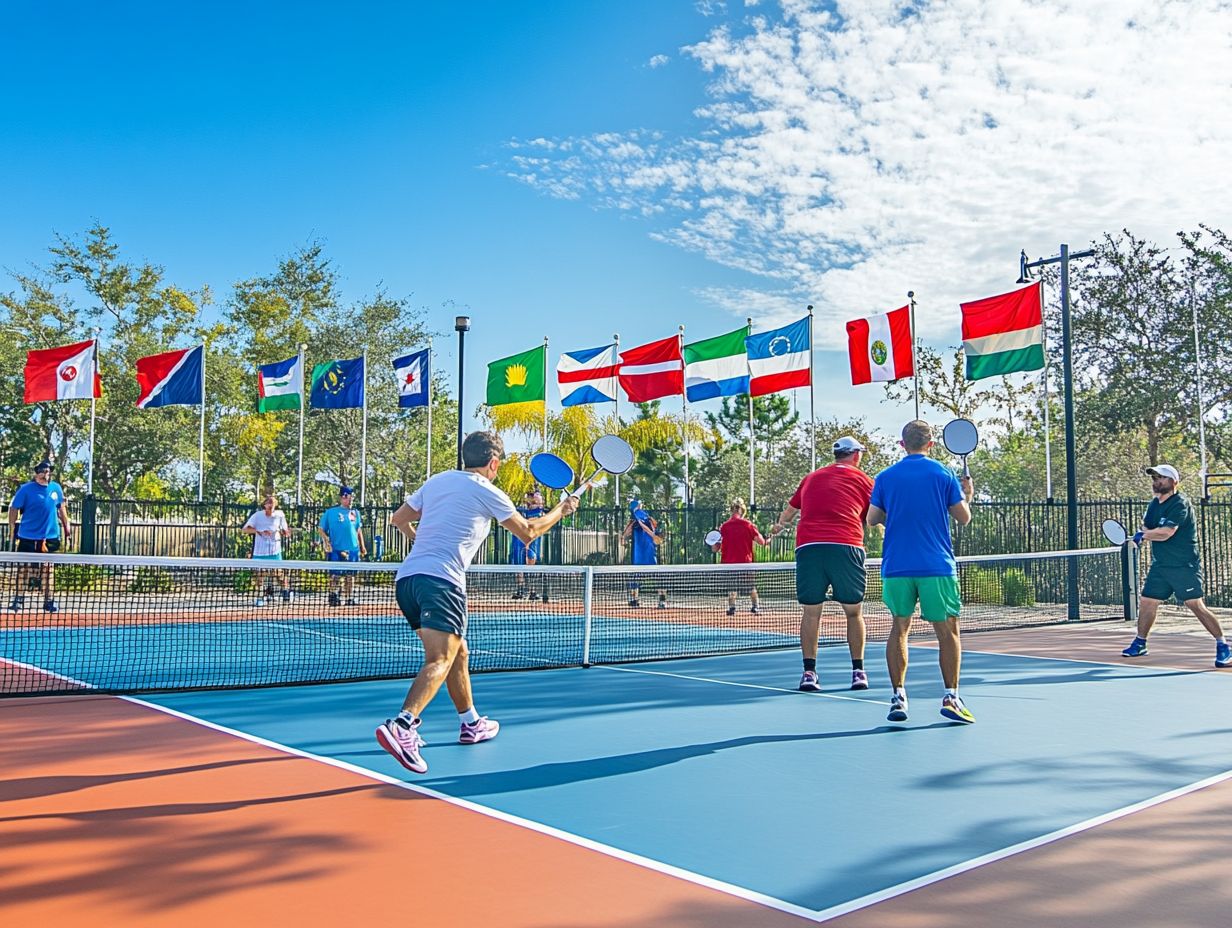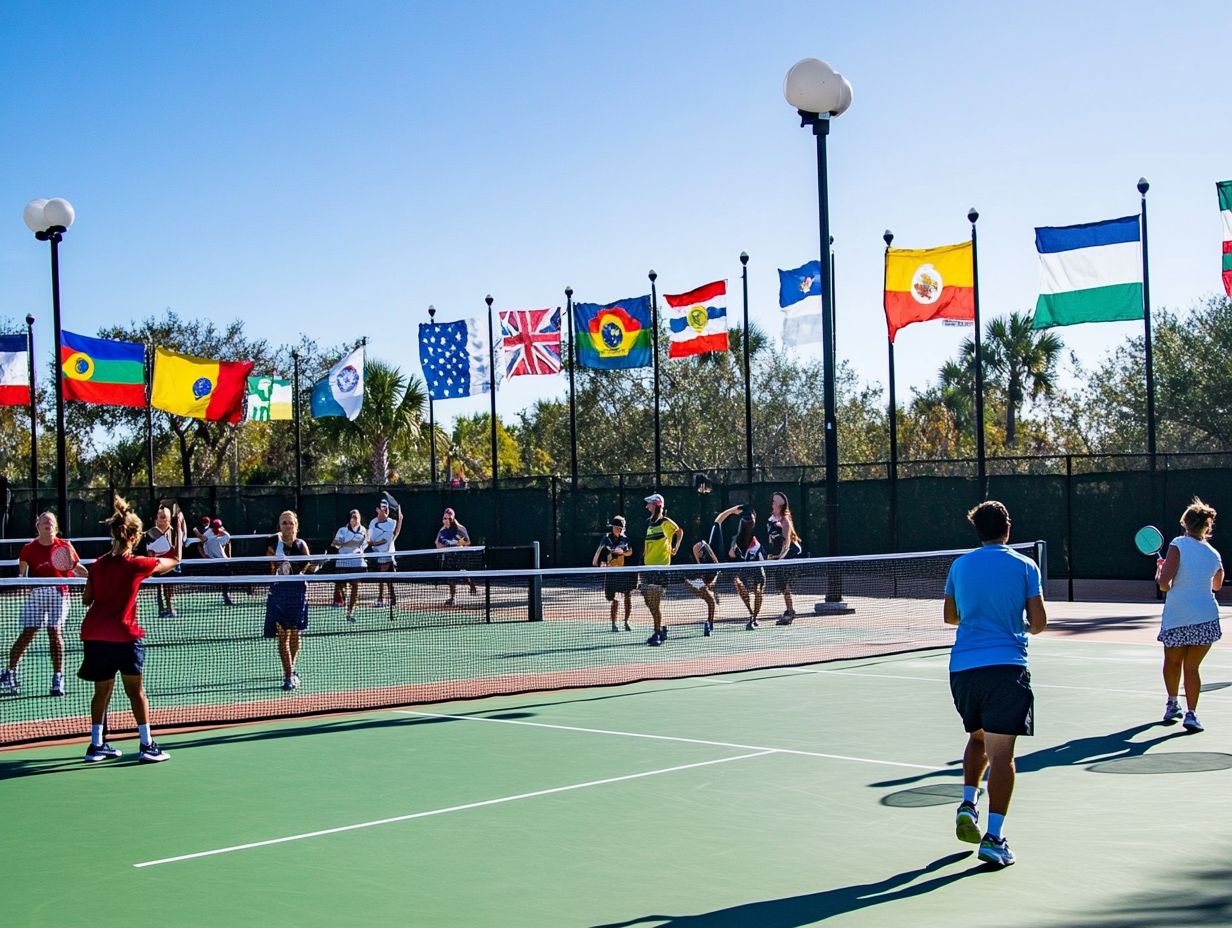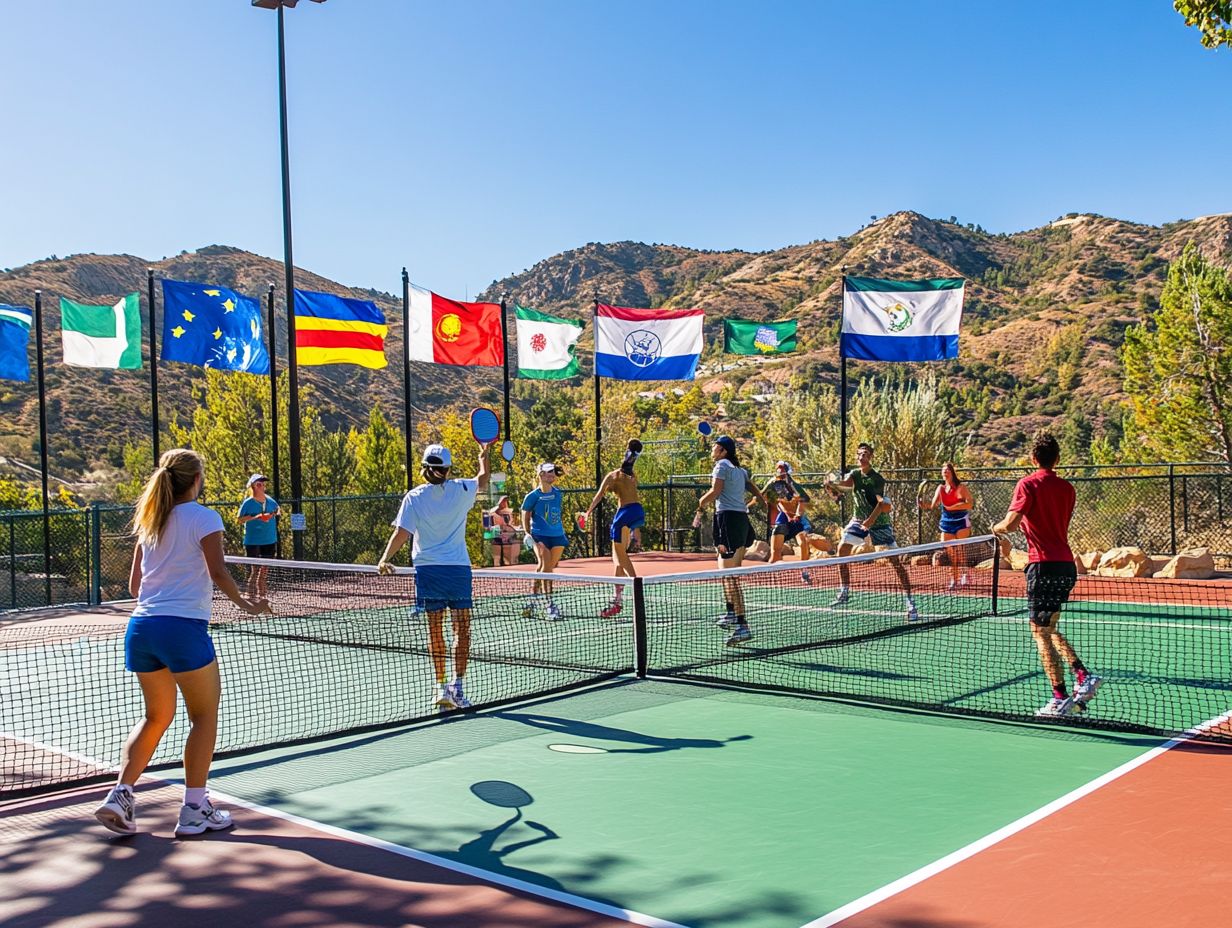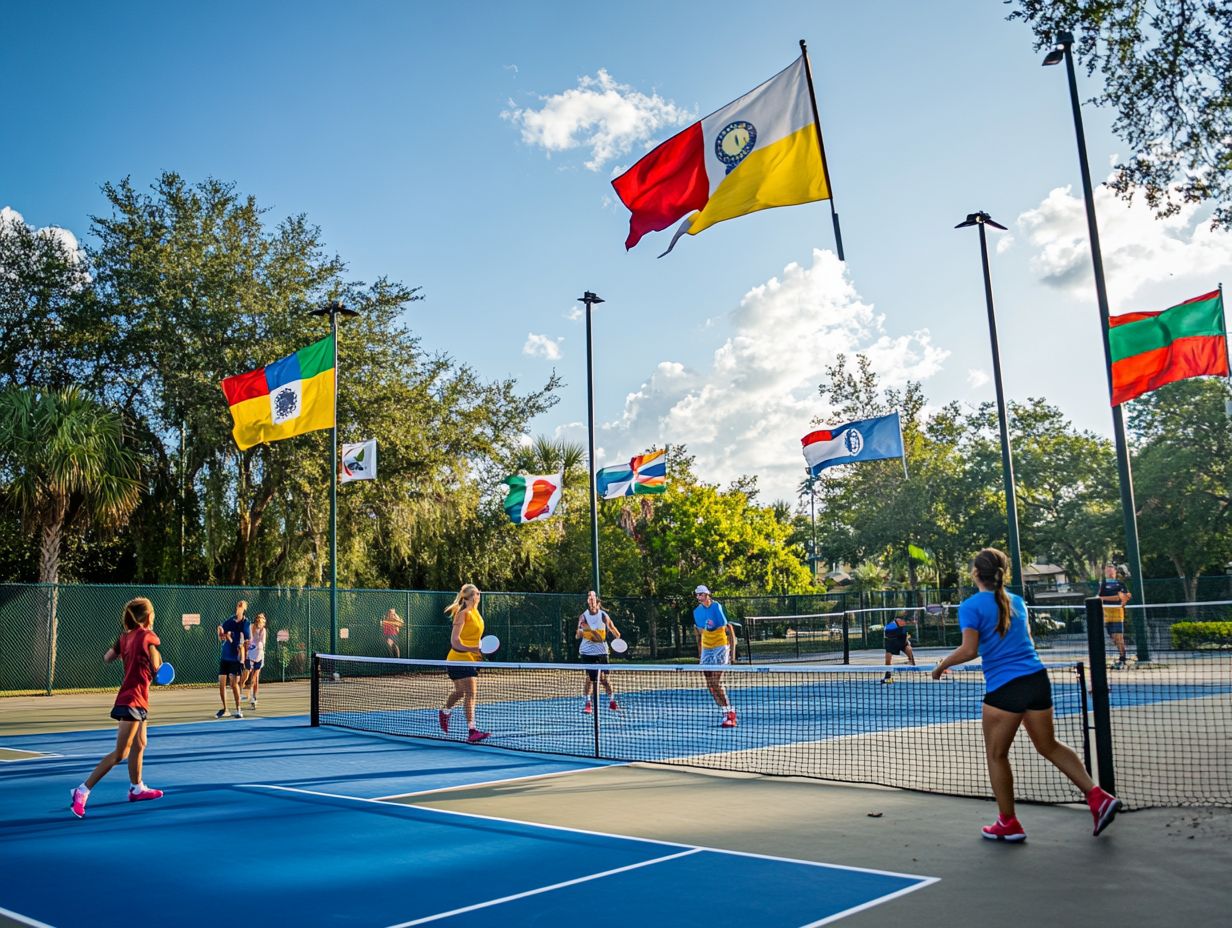Your training includes data up to October 2023.
History and Origins

The history of pickleball began in 1965 when three fathers invented the game on Bainbridge Island, Washington, to entertain their children during summer vacations. This paddle sport, which combines elements of badminton, tennis, and table tennis, has evolved into a widely played recreational activity with established rules, community-building initiatives, and a rich cultural heritage.
As the game gained popularity, its inventors developed simple rules that made it easy to learn and play. Over the decades, pickleball has transformed from a backyard pastime into an organized sport played in schools and community centers across the United States. Its simplicity and the social opportunities it fosters for players of all ages have contributed to its appeal as a means of social interaction.
Local tournaments and clubs provide enthusiasts with regular opportunities to connect, creating a strong sense of community and cooperation that has established pickleball as more than just a sport.
The Growth of Pickleball in the United States
The growth of pickleball in the United States has been remarkable, evolving from a backyard pastime into a mainstream sport embraced by millions. This explosive popularity can be attributed to several factors, including the establishment of amateur and professional leagues, as well as a rising number of recreational facilities that cater to players of all ages and skill levels.
These developments have significantly driven engagement metrics and participation rates across the country.
Popularity and Expansion

The rise of pickleball has made it one of the fastest-growing recreational activities in the United States, characterized by active community events and local tournaments. This paddle sport has evolved into a social activity that connects people and promotes fitness in a fun and engaging manner.
Several factors contribute to the sport’s increasing popularity. Widespread media coverage of tournaments and matches introduces new fans and players to pickleball, while social media serves as a vital platform for players to share their experiences, skills, and highlights, further generating interest and involvement.
Local leagues have become the backbone of player retention, offering a structured environment for skill development and friendly competition. These leagues not only keep members active but also foster a community where players and their families can regularly return and engage with one another.
International Growth of Pickleball
The international growth of pickleball has led to its impressive global spread, transcending borders and cultures. This expansion has resulted in the establishment of international federations and associations dedicated to promoting the sport.
With an increasing number of countries, including Canada, those in Europe, Asia, and Australia, embracing this paddle sport, the potential for broader adoption and community building continues to grow.
Overview of Global Adoption

The global rise of pickleball has been characterized by a diverse player demographic that encompasses various age groups, socioeconomic backgrounds, and skill levels. As communities worldwide engage in outreach efforts and host tournaments, the sport not only promotes fitness but also attracts tourism and fosters cross-cultural exchange.
In the United States, local leagues have emerged alongside national competitions like the USA Pickleball National Championships, which showcase top talent and draw enthusiasts from around the world. Meanwhile, countries such as Canada and Spain have embraced the sport, incorporating unique adaptations that blend local games and traditional styles into play, promoting a rich cultural fusion.
Community engagement is thriving, with many cities establishing pickleball clubs that host events designed to encourage social interaction and teamwork among participants. Player stories often highlight the deep friendships formed both on and off the court, illustrating how this vibrant sport fosters connections that transcend borders.
Factors Contributing to Global Spread
The global popularity of pickleball can be attributed to its accessibility as a paddle sport and the numerous health benefits it offers individuals of all ages.
As players participate in the strategic elements of the game and enhance their skills, pickleball fosters a sense of community and promotes active lifestyles that are both enjoyable and beneficial to health.
Benefits and Appeal of Pickleball

The benefits and appeal of pickleball extend beyond mere enjoyment, encompassing significant health advantages and social well-being. The sport’s emphasis on fitness and strategy makes it an ideal social activity for people of all ages, promoting inclusivity and diversity.
Here are some key benefits of playing pickleball:
- Great Exercise: Pickleball combines aerobic exercise with muscle strengthening, making it an excellent way to enhance overall fitness and manage weight.
- Mental Health Benefits: Engaging in pickleball can reduce stress and alleviate feelings of anxiety and depression, positively impacting mood through the release of endorphins.
- Social Interaction: Pickleball fosters friendships and social connections. Local clubs and events bring people together, promoting community building and allowing individuals to share experiences, develop friendships, and strengthen relationships. This sense of belonging is vital for a healthy and fulfilling lifestyle.
Pickleball in Different Countries
While pickleball is played in various countries around the world, it is primarily concentrated in North America, particularly in the United States and Canada, which boast the highest number of players and facilities. The United States has established several international pickleball associations and federations, including the International Federation of Pickleball and the USA Pickleball Association, to enhance the sport’s global presence. Many current regulations and structures in the U.S. stem from these organizations.
A significant number of dedicated pickleball enthusiasts outside North America are expatriates from the United States and Canada who have relocated abroad. These individuals often bring their passion for the sport to their new homes, fostering the development of small but vibrant pickleball communities. Countries such as Mexico, the Philippines, the United Kingdom, Costa Rica, and the Netherlands have seen the emergence of growing player communities. According to USA Pickleball, there are associations in 22 countries outside of North America.
In Canada, while the number of players is relatively modest for its size, there is a thriving and steadily growing pickleball community. As of January 2023, Pickleball Canada had registered over 50,000 members across the country. The organization serves as the national governing body, collaborating with local associations to promote the sport, host tournaments, and conduct high-performance training camps for elite players. Similar to the U.S., pickleball is primarily played outdoors in the summer and indoors during the winter, attracting players of all ages.
Australia faces a similar challenge to Canada regarding player numbers, with a smaller community relative to its population. By May 2023, Pickleball Australia reported over 10,000 regular players nationwide. The organization publishes a newsletter, organizes tournaments, and oversees local associations, with a significant portion of the pickleball community comprising American expatriates.
In the United Kingdom and Ireland, pickleball was introduced in 2008 after being played by American expatriates for nearly three decades. The sport has grown to include over 2,000 players, with the British Isles Pickleball Association acting as the main governing body. Pickleball is played in schools, clubs, and community centers, with many enthusiasts enjoying games in their backyards.
Mexico has also seen a surge in pickleball popularity, particularly in tourist areas during the winter months when American and Canadian expatriates flock to the region. Approximately 2,500 players are registered with the Federacion Mexicana de Pickleball, and the sport is expected to expand rapidly in the coming decade as new facilities are developed.
The Caribbean and Central America host a large population of expatriates from the United States and Canada who visit annually. Pickleball is well represented in countries such as Barbados, Costa Rica, the Dominican Republic, El Salvador, and Guatemala. While many players originate from the U.S. and Canada, each country is beginning to cultivate its own pickleball communities.
In the Philippines, the pickleball community is growing rapidly. The sport gained popularity after local television broadcasts featured American players, leading to a surge in participation that has reached 1,000 players in just a few years. The Philippines Pickleball Federation was established in 2017 to govern and promote the sport.
In Europe, several nations have developed vibrant pickleball communities. France leads with over 7,000 players, governed by the Association Francaise de Pickleball. The Netherlands has a similar number, overseen by the Netherlands Pickleball Association. Spain has approximately 5,000 registered players, while Pinneberg in Germany is recognized as the pickleball capital of Europe, boasting over 2,000 players. In total, there are about 100 active pickleball communities across Europe, according to the International Federation of Pickleball.
In Africa and the Middle East, communities have also begun to establish themselves. Israel is home to around 1,200 players, and the sport is expanding rapidly. The Israel Pickleball Association was formed in 2012, and the Israeli Pickleball Championships are held annually. South Africa has also developed a vibrant pickleball community.
Examples of Pickleball Communities and Tournaments
Numerous examples of pickleball communities and tournaments around the world illustrate the sport’s growing popularity and the camaraderie it fosters among players. From small local leagues to large international competitions, these events not only celebrate athleticism but also serve as platforms for sharing player stories that highlight the sport’s inclusive nature.
For instance, the annual USA Pickleball National Championships held in Indian Wells attracts thousands of competitors and spectators, providing an economic boost to the local area while showcasing stories of friendships formed on the court. Communities like those in Naples, Florida, have thrived around pickleball, promoting health and wellness initiatives that engage individuals of all ages.
Notably, players from diverse backgrounds come together, as seen in community outreach programs that utilize the sport to bridge cultural gaps and encourage active lifestyles, demonstrating the unifying power of pickleball in enriching social connections.
Challenges and Opportunities for Further Growth
Despite the rapid growth and popularity of pickleball, various challenges and obstacles may impede its further expansion both locally and internationally.
However, grassroots movements and community-driven initiatives offer significant opportunities to address these challenges and enhance engagement in the sport.
Obstacles to Overcome and Potential for Expansion
Barriers to the expansion of pickleball include the need for investment in recreational facilities and public courts, which limits accessibility for new players and hampers community outreach efforts. If these barriers are overcome, there is a significant opportunity for growth in player participation and the development of programs.
Challenges to community engagement in pickleball stem from low funding and limited awareness, which restrict participation and widen the gap for potential players. Many families may lack the financial resources to travel to distant courts or purchase the necessary equipment.
Community ambassador programs that promote engagement through local events and social media can effectively raise awareness of pickleball. Additionally, sponsorship opportunities with local businesses can help finance the construction and maintenance of courts.
Investing in training programs designed for a diverse range of demographics is essential to ensure that both newcomers and advanced players seeking to enhance their skills feel included in the sport’s culture.

Pickleball’s more than a game to me—it’s a passion. I write, sharing its highs and lows, the thrills and the lessons. Some tales might draw you to the court, while others give a hint of the game’s magic. So, curious about my journey? Ready to dive deep into the world of pickleball with me? Let’s go.
